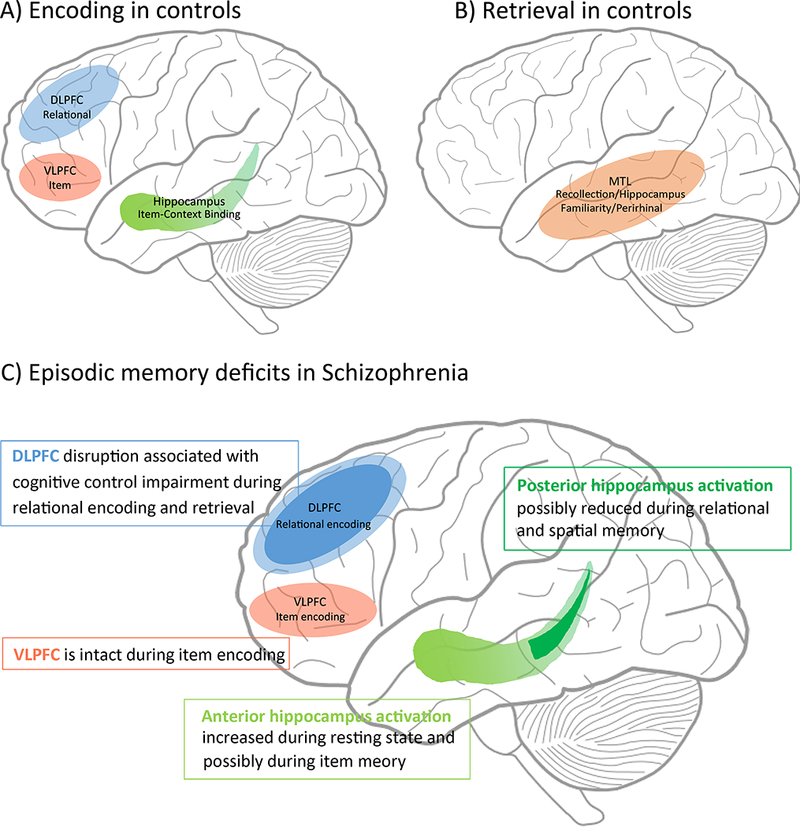Figure 2:

In controls, DLPFC provides control of relational encoding and VLPFC controls item-specific semantic processing, and hippocampus binds associations between item and context information during encoding (panel A). At retrieval, recollection engages the hippocampus and familiarity engages mainly perirhinal cortex, with little hippocampal engagement (See 30, 33, 118 for theoretical models) (panel B). Panel C illustrates disrupted DLPFC (blue) activation during encoding and retrieval in Sz, while VLPFC (orange) remains intact during item encoding, suggesting an important role for cognitive control deficits underlying episodic memory impairment in Sz. On the other hand, relational and spatial memory dysfunction in Sz is associated with reduced posterior hippocampal activation in Sz, whereas increased anterior hippocampal activation has been associated with item memory.
